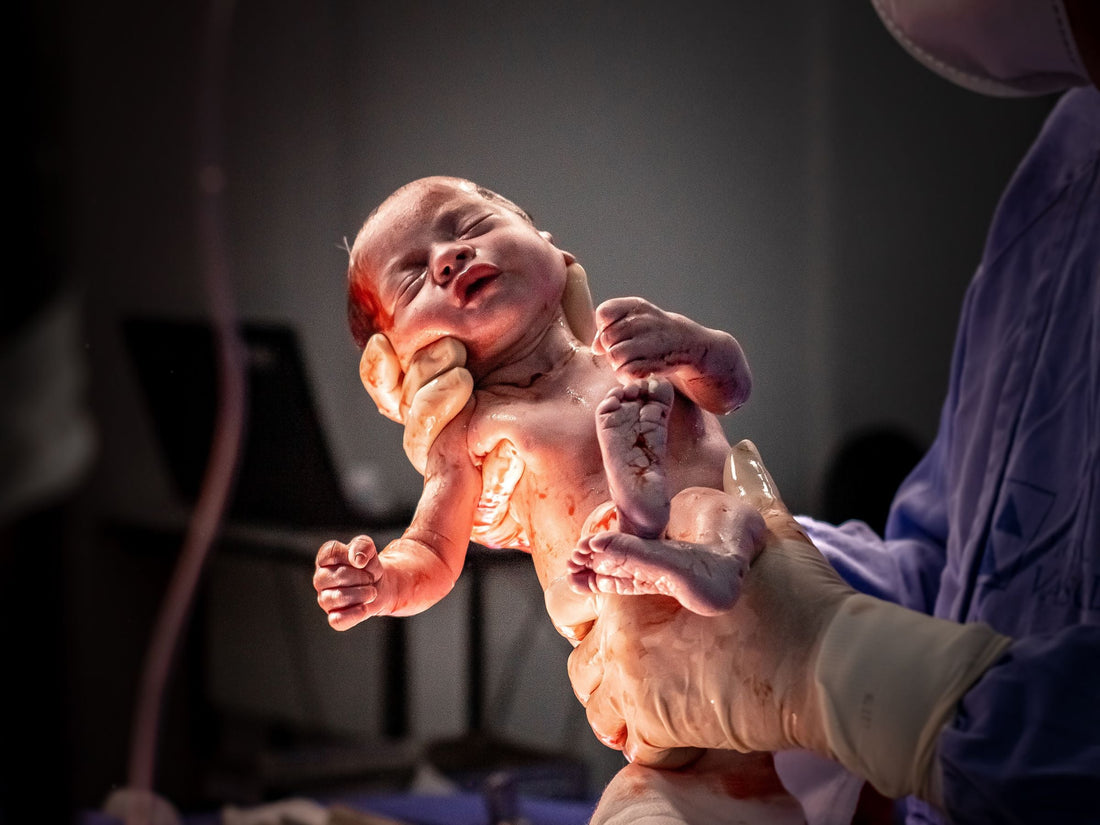Umbilical Cord Around Neck: Complete Guide
Among the most common concerns of future mothers, the topic of the umbilical cord around the newborn's neck is one of the most discussed.
Understandable, given that this is a sensitive and often anxiety-provoking topic.
In this article I will guide you step by step to clarify your ideas:
- What is the umbilical cord around the neck and how common is it?
- What are the possible (often solvable) consequences?
- How can pediatric osteopathy support your child?
If you are interested in learning more about motor development , language, cognition, self-weaning, pediatric obstruction, etc., I recommend you join the Academy .
Also, on my Instagram profile @drsilva.com_official and on my Youtube channel you will find lots of content designed for you and your little one.
What is the umbilical cord?

Umbilical cord: structure, functions and curiosities about its formation
Before delving into the topic of the umbilical cord around the newborn's neck, it is essential to understand what this structure is and what role it plays during pregnancy.
The umbilical cord, about 55 centimetres long, is located in the amniotic sac next to the fetus and is made up of three umbilical vessels: a vein and two arteries .
- The vein carries blood rich in oxygen and essential nutrients to the fetus.
- The arteries , on the other hand, carry blood deprived of oxygen and loaded with metabolic waste back to the placenta.
Its main function is to connect the placenta to the fetus's circulatory system, ensuring the supply of oxygen and nutrients essential for the baby's development during the nine months of gestation.
Umbilical cord: structure, functions and curiosities about its formation
The formation of the cord begins around the fifth week of pregnancy , with the appearance of a stalk that connects the embryo to the trophoblast, the tissue that nourishes it and which will become the placenta.
By the end of the first trimester , the umbilical cord reaches its full functional maturity, becoming a fundamental element for the well-being of the fetus.
And in twin pregnancies?
In the case of an identical twin pregnancy , each fetus has its own umbilical cord, ensuring each baby has the nourishment necessary to grow in a balanced way.
Umbilical cord around the neck

One of the most frequent doubts among future parents concerns the possibility that the umbilical cord will wrap around the newborn's neck.
Can the umbilical cord wrap around your baby's neck?
The answer is yes , it can happen, but it is important to know that this is a very common event and rarely a cause for concern .
How common is the umbilical cord around the neck?
The birth of a newborn with the umbilical cord wrapped around the neck is a fairly common occurrence.
According to statistics, approximately 25-30% of newborns have at least one loop of cord around their neck at birth.
This condition, called "umbilical cord gyration" or "nuchal cord," is usually harmless. In most cases, the cord is not stretched enough to cause significant problems, and medical or obstetric staff are well trained to handle such situations safely during childbirth.
Because there is no reason to worry
Culturally, the umbilical cord around the neck may evoke anxiety in parents, but in most cases it is a physiological event and without serious consequences. Only in rare situations, when the cord is particularly tight, complications may occur, but even in these cases, the medical team is prepared to intervene promptly.
When and how do you discover a loop of cord around a newborn's neck?
In some cases, the presence of the cord around the fetus' neck can be detected by ultrasound during pregnancy.
However, more commonly, the situation is detected at the time of delivery.
Do mothers' positions or behaviors influence risk?
No. There are no maternal behaviors or positions assumed during pregnancy or labor that can increase the risk of cord twisting. It is a natural event that does not depend on the choices or actions of the mother.
Get informed to know what to do
While there is no reason to fear, it is helpful to be informed.
The umbilical cord around the neck can have some minor consequences (such as myogenic torticollis in the newborn and problems with sucking in the newborn), easily solved with the support of qualified professionals including the pediatric osteopath.
Umbilical Cord and Myogenic Torticollis: Causes, Consequences and Solutions

The umbilical cord around the neck, especially in the context of a difficult birth – for example, if the baby is canalized for a long time or if a ventouse is used – can contribute to the onset of a condition called myogenic torticollis.
Myogenic torticollis is a very common problem in newborns, caused by more or less marked muscle contractures in the neck. This condition causes an alteration in the posture of the head, which appears:
- Rotated and/or
- Inclined
The pediatrician and pediatric osteopath identify myogenic torticollis through:
- Clinical observation of the newborn.
- Muscle ultrasound , if necessary, to assess the extent of contractures.
The pediatrician then directs the parents to an osteopath who specializes in treating newborns.
Early intervention is crucial to prevent secondary complications, such as positional skull deformities . The most common of these is plagiocephaly , a flat head that can develop due to the skull's moldability in the first few months of life.





